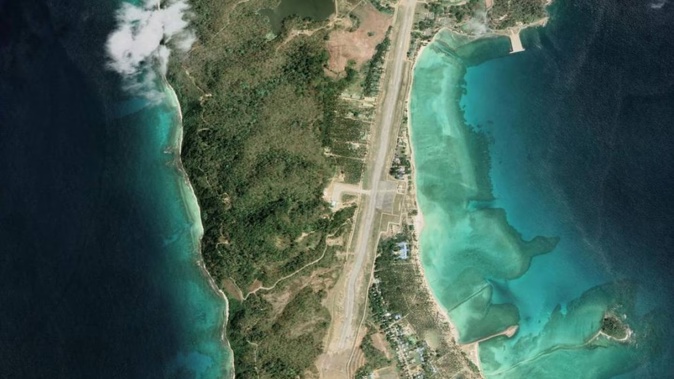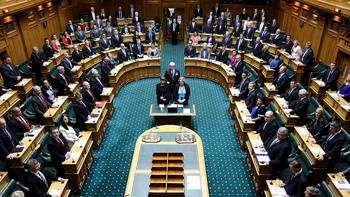
Why would civil-war-wracked Myanmar spend millions on upgrading the runway and military facilities on a remote island? It probably has something to do with the murderous regime’s closest international friend: China.
Great Coco is the largest of the group of seven islands in the Bay of Bengal between India and Myanmar. It’s about 10.4km long and 2km wide. Overall, about 1500 people live there.
It would remain just another forgotten dot on a map if it wasn’t for Beijing’s determination to establish itself as a global superpower.
And that’s what makes this dot so important.
It’s just 55km north of an Indian military facility in the Andaman and Nicobar Island group. And it’s 1200km from the narrow Strait of Malacca, between Malaysia and Indonesia, through which a large portion of global trade passes yearly. Not to mention most of Beijing’s oil and gas imports.
If China was to have access to air and naval facilities there, it would challenge the balance of power over critical international sea lines of communication (SLOC).
“For China, the debate boils down to two key points – either they find a way to reduce their dependency on the Malacca Strait, or they maintain a credible presence in the Indian Ocean to equally secure the SLOCs,” New Delhi think-tank Observer Research Foundation analyst Darshana Baruah warned in 2015.
It’s one explanation for the otherwise inexplicable expansion and revitalisation project in the far-flung corner of Myanmar. Given its existential crisis on the mainland, the junta must have an overruling need to invest there.
“Were Myanmar to get the base fully established, surveillance flights could track movements to and from the Andaman and Nicobar Islands,” reads a new report from independent international think-tank Chatham House. “Given China’s well-established intelligence practices, local intelligence from Great Coco could find its way, either through espionage or consent, to Shanghai.”
Strategic choke point
Recent satellite photos show two new hangars, new accommodation facilities, and a new causeway providing road access to an island just off Great Coco’s southernmost tip.
The upgraded runway has also been extended in recent years from its original 1300m length to about 2300m. One of the 40m-wide hangars was completed last year. Work on the second began early this year.
“[The] expanded air base on Great Coco opens the possibility that India may soon have to contend with Tatmadaw (Myanmar’s army) watching the movements of its warships,” says the Chatham House report’s author Damien Symon.
The nearby Andaman and Nicobar Islands give India’s Eastern Fleet a commanding presence in the Bay of Bengal and control over the Indian Ocean’s approaches to the Strait of Malacca.
The Coco Islands lie between Myanmar and India. Photo / Google Maps
“The militarisation of the Coco Islands by the Tatmadaw, combined with the wider Chinese developments occurring inland, could pose a significant security challenge to India and its navy,” he writes.
Beijing has long expressed concern over its reliance on shipping having to pass through the Strait of Malacca or other narrow waterways through Indonesia. That’s why it has steadily improved ties with nations across the Indian Ocean, from Djibouti and Pakistan in the West, to Sri Lanka and the Maldives in the centre and Myanmar in the East.
It already has a significant naval and air facility in Djibouti. Construction of another is under way in Pakistan. Fears have been expressed over its “debt-trap” control over a major port in Sri Lanka and similar excessive investments in the Maldives.
Now, all it needs is a “bypass” for the Malacca Strait.
It’s working on it. Despite Naypyidaw being almost ungovernable, Beijing is doubling down on developing a China-Myanmar Economic Corridor. This will provide southern China with direct access to the Indian Ocean.
Axis of authoritarians
Myanmar’s military junta is struggling.
A national election in 2020 saw its puppet political party crushed at the polls. Aung San Suu Kyi’s National League for Democracy coalition won an overwhelming majority.
But General Min Aung Hlaing declared a “state of emergency”, arrested all Opposition leaders and installed himself as leader of a military state. Since then, waves of national protest have degenerated into an outright civil war.
General Min Aung Hlaing. Photo / AP
The US has led the drive to impose sanctions against the junta’s leadership and supporters. It’s also sought to provide support for Myanmar’s surviving democratic groups.
Beijing, however, is resolutely supporting the military dictatorship.
“But whereas other governments and foreign investors have sought to distance themselves from the junta since it overthrew Myanmar’s elected government in February 2021, China has deepened its relationship,” writes Curtin University Associate Professor Htwe Htwe Thein.
Last year, China’s then-Foreign Minister Wang Yi said China would support Myanmar “no matter how the situation changes” before blocking a UN Security Council resolution condemning the growing humanitarian crisis there.
“With Myanmar’s armed forces struggling to control large swathes of the country and with the economy in free fall, China seems to be shoring up the regime and protecting its investments for now,” argues Symons.
“Chinese companies are believed to be operating on the ground, building major infrastructure projects such as deepwater ports, while the junta is allocating the few troops it has left to protect them.”
For Beijing, however, the reward far outweighs the geopolitical risk.
“Overcoming this strategic vulnerability arguably makes the Kyaukphyu port and pipelines the most important element of China’s Belt and Road initiative to reshape global trade routes and assert its influence over other nations,” argues Thein.
- Jamie Seidel, news.com.au
Take your Radio, Podcasts and Music with you

/cloudfront-ap-southeast-2.images.arcpublishing.com/nzme/BQELYNVK3ZDP3BAKX4UHHX2I6U.JPG)
/cloudfront-ap-southeast-2.images.arcpublishing.com/nzme/P3ZWE2JUJBDZDIDEHT7KVEBT3Y.JPG)








